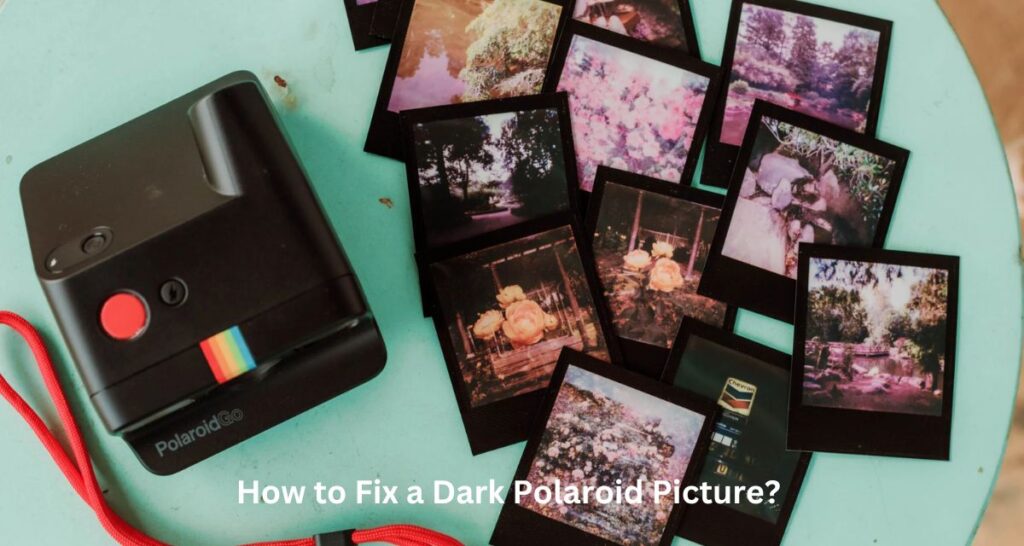If your Polaroid picture turned out too dark, don’t worry! With these helpful tips, you can easily fix it and restore the brightness.The first step to fixing a dark Polaroid picture is to understand why it happened. The issue is usually related to exposure — the amount of light that hits the film. Dark pictures occur when the camera lets in too little light, commonly due to a fast shutter speed or a narrow aperture, especially in low-light situations. Understanding exposure is fundamental, but don’t worry, we’ll break it down into digestible bits.
Factors Contributing to Dark Polaroids
Polaroid cameras, like any others, depend on three main factors to achieve good exposure: aperture size, shutter speed, and the light sensitivity of the film (ISO). If any one of these is incorrect for the lighting conditions, you’ll likely end up with a darker photo than intended.
Importance of Proper Exposure
The right exposure is critical for photography, determining the brightness and detail of your photos. Proper exposure ensures that you capture the scene with all the highlights and shadows correctly represented. Overexposed photos have too much light, often leading to loss of detail in lighter areas. On the other hand, underexposed pictures can be overly dark, hiding detail in shadows.
How to Fix a Dark Polaroid Picture?
Polaroid photography, at its core, is a game of light. If you understand how to manipulate light in a scene, you’re on the right track to producing better, well-exposed photos.
Adjusting Exposure Settings on the Camera
Contrary to popular belief, many Polaroid cameras do offer adjustments for exposure. Look for the exposure compensation dial, often marked with icons like sun and cloud. Rotate it towards the sun if your picture is too dark.
Using a Flash or Additional Lighting
Flash is your knight in shining armor when the surroundings are dim. Whether the camera has a built-in flash or you’re using an external one, firing light onto your subject can dramatically alter a photo’s exposure.
Utilizing Natural Light Effectively
When shooting outdoors, the time of day and the direction of light become crucial. If the sun is high and the shadows are strong, your photo might end up too contrasty with deeply dark areas. Aim for soft, diffused natural light for more even exposure.
Post-Processing Techniques
So, you’ve taken the shot, and it’s a bit on the dark side. Don’t fret; post-processing can perform miracles. Let’s explore some basic editing techniques that can convert a dark Polaroid picture into a lively one.
Adjusting Brightness and Contrast in Editing Software
Most photo editors allow for the adjustment of brightness and contrast. Increasing the brightness lifts the overall exposure, while tweaking the contrast might reveal details in the shadows without blowing out the highlights.
Enhancing Shadows and Highlights
Dedicated shadow and highlight adjustments in more advanced photo software can rescue a surprising amount of detail from darkness. By separately adjusting these two elements, you bring balance to the exposure.
Correcting Color Balance
Sometimes a photo is not just dark but also exhibits a strong color cast, making it look unnatural. By correcting the color balance, you can bring back the warmth or coolness that may have been drowned out by darkness.
Preventing Dark Polaroid Pictures
Fixing a dark Polaroid picture in post is one thing, but preventing it is even better. With a few tools and principles, you’ll significantly reduce the occurrence of underexposed images.
Metering and Exposure Techniques
Understand the camera’s light metering system. Learn to read the scene and adjust your technique accordingly. This might mean using the ‘rule of thirds’ to frame your shot, or simply moving your subject out of the direct sunlight to avoid harsh shadows.
Using a Light Meter or Smartphone App
If your camera doesn’t have a light meter, get one. Whether it’s a physical handheld device or a downloadable app, a light meter can guide you on the precise settings to use for a well-exposed photo.
Understanding the Camera’s Limitations
Every camera, Polaroid or otherwise, has its limits. Polaroid cameras, especially vintage ones, may only perform optimally under certain lighting conditions. Experiment and get to know your camera’s sweet spots.
Conclusion
There you have it, a plethora of options to shed light on those dark Polaroid pictures. Be methodical in your approach, understand the role of light, and practice these tips until they become second nature. Remember, the journey to becoming a skilled photographer is as rewarding as the art itself.
So next time you find yourself with an underexposed Polaroid, embrace the challenge. Use these tips to elevate your skills and learn from every shot. With a little bit of knowledge and a lot of creativity, you’ll be amazed at how quickly you can turn a darker moment into a shining memory. For more, you are always welcome.
